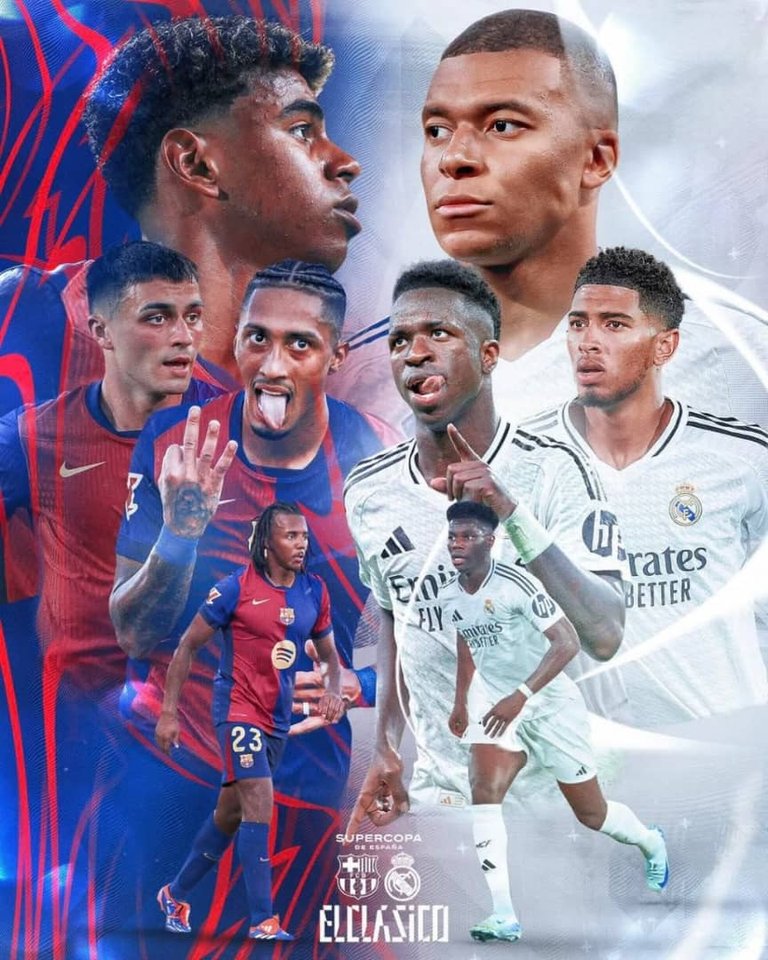Welcome to InLeo Demie! Hope you'll find yourself some interesting individuals and a niche of your own. A great start is to interact with other people and reply to their threads, and to explore the site. You start that way, and you'll do fantastic. Cheers and happy journey!
Feel free to share all entertainment updates across the world
Entertainment shorts and long videos are welcome
You can paste the link of any video and invite your friend to join you to watch it as discussion goes on
You can invite friends and make a chat section as you enjoyed your activities on Leo, different entertainment activities are welcome
Don't forget to subscribe to @mightpossibly, so you can be able to use the #aisummaries tool to feed in YouTube entertainment video on this cast.
Welcome to my daily thread on X about Hive #threadcast
Thread #2 on X about $HIVE is about to be dropped.
I will leave the link below 👇 so I hope to see you all supporting it and comment here the next feature or topic for tomorrow. I will choose one from the comments every day.
Greetings to you my dear friend, its a pleasure having you on leothreads.. and we pray God's mercy on us and for him to put an end to those ugly happenings!
I stayed up almost throughout last night watching the HIVE chart if I can catch the volatility, but now I am having a headache after wasting my night for nothing.
If there were a belt system for achievements in crypto, it could be called the "Blockchain Mastery Belt." This would represent a high level of skill and understanding in various aspects of cryptocurrency and blockchain technology. 🥋
they have a legit stud at QB....that makes the job attractive from the jump. but Vrabel will be treated like royalty there too. he cant do any better than that gig
What's up? It was a good day for me and I tried to make my day productive and I am satisfied with it. I started to watch a new drama and I hope the drama will be interesting. How was your day?
CHIMNEY WALLSTOP is a special type of monster that was introduced in the game a while ago. This monster comes under the Gladiator type card set. This monster belongs to the fire element and its attack type is melee.
It costs 10 mana to use this card in battles and it is a common type card, so you will need a total of 400 BCXs of card in order to upgrade this monster to max level.
I'm not in anyway promoting this brand but for me I believe the only way the coin can have it potential is by having a strong community, that is where the referral program comes in.
is not necessary that you most refer, it depends on you to refer or not, but referring someone help you mine at a high rate of 0.05 in stead of the 0.001 mining rate.
support shown ✊ INLEO WE TRUST
2024 was a great year for Bellscoin, and 2025 is set to be even better 🚀🔔
How I frown at all the challenges in my life , I will defeat them..lol
Happy Sunday and my name is David
#newlion
Welcome to INLEO! 🚀
My mom (@sjagoe) was active on the legacy chain
I plan to go over today and help her set up Keychain and Ecency to become active once again
I think she will be happy with the changes over the years.
It is good of you to get her set up on Hive.
If you set her up via your referral link in INLEO you will earn from her activities.
!BBH !ALIVE !DOOK !INDEED
Will the referral work if she already has a HIVE account?
Thanks!
!BEER
No, only if it is a new account.
You can always start her with a new account.
View or trade
BEER.Hey @beststart, here is a little bit of
BEERfrom @jeffjagoe for you. Enjoy it!Did you know that <a href='https://dcity.io/cityyou can use BEER at dCity game to buy cards to rule the world.
Good gesture from you
(4/20)
@jeffjagoe!
You Are Alive so I just staked 0.1 ALIVE to your account on behalf of @beststart.
Rember to support to support the Leo proposal for DHF... here's my screenshot:

#leo2025
Where is the link to vote
thank you for your support - https://peakd.com/proposals/332
Follow this link to vote https://peakd.com/proposals/332
Yesterday was BBH/BBHO "DRIP DAY" What other token on HIVE rewards SWAP.BTC every week? #BBH #DRIP Thanks @bradleyarrow
Good question! Is there another token doing it? !BBH !DOOK !ALIVE !PIMP
(5/10)
@ironshield!
You Are Alive so I just staked 0.1 ALIVE to your account on behalf of @bradleyarrow.
Saw the #BBH Tipping bot report today and realized I'm slacking!
!BBH
!SLOTH
My name is demie , and I want to make friends here and I also want to learn from others and share my own little knowledge too #newlion
Welcome to InLeo Demie! Hope you'll find yourself some interesting individuals and a niche of your own. A great start is to interact with other people and reply to their threads, and to explore the site. You start that way, and you'll do fantastic. Cheers and happy journey!
Demi hi, I'm also new here. Would love to be your first friend
Hi Demie
welcome
Ok nice to meet you. I'm gonna give you a follow.
"The further we fly, the more data we collect."
This was a quote from a conversation from a SpaceX employee talking about the upcoming Falcon 7 launch.
It always comes back to the data and generating it.
The data war goes on unabated.
Data seems to be the most important thing in our world right now. I think it's time to call this era not the technological age but the data age
#gmfrens! Here is the Motivation, Inspiration, Success #threadcast for Sunday 1/12/2025
#1440minutes #motivationsonleo #inspirationonleo #successonleo #motivation #inspiration #success
!summarize #howardmarks #success
!summarize #charliemunger #success #life
!summarize #angelofdeath #allisonblack
!summarize #success #paradox #luck #hardwork
!summarize #mindset #achievers #success
!summarize #life #success #perspective
!summarize #success #goals
!summarize #success
!summarize #eckharttolle #jordanpeterson #powerofnow
!summarize #mentor #success
!summarize #mindset #achievers #success
Sunday morning time to clean our weapons and restock the cellar.
Winter prep is important.
true talk winter is coming are you ready for it? Preparation is an important tool
Leo Entertainment Threadcast
Don't forget to subscribe to @mightpossibly, so you can be able to use the #aisummaries tool to feed in YouTube entertainment video on this cast.
#threadcast #leoentertainment #mcb 12/01/2025
!summarize #primerecap
!summarize #primerecap
!summarize #primerecap
!summarize #primerecap
!summarize #primerecap
!summarize #primerecap
!summarize #primerecap
!summarize #primerecap
!summarize #primerecap
!summarize #primerecap
!summarize #primerecap
https://youtu.be/7lJc65vi80?si=uF-ah110GL7RWk0
!summarize #primerecap
!summarize #primerecap
!summarize #primerecap
!summarize #primerecap
!summarize #primerecap
!summarize #primerecap
!summarize #primerecap
!summarize #primerecap
!summarize #primerecap
!summarize #primerecap
!summarize #primerecap
!summarize #primerecap
!summarize #primerecap
!summarize #primerecap
!summarize #primerecap
!summarize #primerecap
!summarize #primerecap
!summarize #primerecap
!summarize #primerecap
!summarize #primerecap
!summarize #primerecap
!summarize #primerecap
!summarize #primerecap
!summarize #primerecap
!summarize #primerecap
!summarize #primerecap
!summarize #primerecap
!summarize #primerecap
!summarize #primerecap
!summarize #primerecap
!summarize #primerecap
!summarize #primerecap
!summarize #primerecap
!summarize #primerecap
!summarize #primerecap
!summarize #primerecap
!summarize #primerecap
!summarize #primerecap
!summarize
!summarize
!summarize
!summarize
!summarize
!summarize
!summarize
!summarize
!summarize
!summarize
!summarize
!summarize
!summarize
!summarize
!summarize
!summarize
!summarize
!summarize
!summarize
!summarize
!summarize
!summarize #thebeatles #georgemartin #music #history
!summarize #robschneider #jordanpeterson #hollywood
!summarize #speedracer #mach5 #television #car
!summarize #music #song
!summarize #osmonds #rock #music #labum
!summarize #carolburnett #jimnabers #hollywood #actors
!summarize #movie #review #minnesota
!summarize #losangeles #karenbass #mayor
!summarize #kipwinger #music #rickbeato
!summarize #hollywood #streaming #cordcutting
!summarize #thebeatles #bridges #music
!summarize #disney #moana #hollywood #movie
!summarize #butchwalker #music #hitrecord #rickbeato
!summarize #robertduvall #top10 #movies
!summarize #captainamerica #bravenewworld #movie #reviews
!summarize #superstar #duos #music #hatred
Thank you for supporting LEO!
https://inleo.io/threads/view/senorcoconut/re-leothreads-vezggjs8
gm
This seems to be the way of hive....
I like how they put it: Hive's everything app 💪💪💪 your votes matter. Let's make Hive Great with Inleo #leo2025 #bethebest #inleo
Recent interview regarding Gibson, he seem very into catholic church history
#skiptvads , #moviesonleo , #gibson , #interview
The DHF Voting Tutorial
https://inleo.io/threads/view/senorcoconut/re-leothreads-kfofb4n3
why not they seem to be making things happen

Welcome to my daily thread on X about Hive #threadcast
Thread #2 on X about $HIVE is about to be dropped.
I will leave the link below 👇 so I hope to see you all supporting it and comment here the next feature or topic for tomorrow. I will choose one from the comments every day.
#crypto #inleo

it goes live when you hit 15 threads
Thanks
it is live already, everybody can start a threadcast, if you’re premium it shows up on the top bar when it hits 15 comments … smartypantsmode: off 🤓
Eyes on that 👁️👁️👁️👁️
Next one will be drop in a few minutes
Threadcasts get active as soon as they have 15 or more comments
ummm, i didn’t know that, thanks
Here is the link! Leave your Like and RT
~~~ embed:1878445843914645635?s=46&t=4qzZZMlLF5w_E06v1-O-rw twitter metadata:bWFudXBob3Rvc198fGh0dHBzOi8vdHdpdHRlci5jb20vbWFudXBob3Rvc18vc3RhdHVzLzE4Nzg0NDU4NDM5MTQ2NDU2MzV8 ~~~
It's working the "Threadcast" indicator is visible on my end.
Oh, i wasn’t seeing the circle in the feed view
My first proposal vote in Hive so it took me a while before realizing I had to go to upcoming tab. #lionsroar #leo2025

Someone is getting paid 1200 per day on this platform?
I'd quite my full time job soon
📊 At least 60 #billionaires have invested in #Bitcoin💰, signaling growing confidence among the world's wealthiest individuals.
#crypto #leo2025
Aperturar una granja de bots en Splinterlands que sea realmente rentable creo que es una buena idea realmente! #spanish #splinterlands
Hello #hive ! And if we have coffee while enjoying the colors of life!
#santiagodecuba #hivecuba #coffeelovers #coffee #inleo #threadcast #cent
Hope your sunday is going fine , mine is going well though I am not happy with the disaster going on at some states in USA.
#newlion
It is terrible indeed, all that is happening around us.
I feel it is time to be thankful for what I have in my life and not take everything for granted.
I hope your Sunday is awesome.
!BBH !ALIVE !DOOK !INDEED
(2/20)
@priscaworld!
You Are Alive so I just staked 0.1 ALIVE to your account on behalf of @beststart.
Greetings to you my dear friend, its a pleasure having you on leothreads.. and we pray God's mercy on us and for him to put an end to those ugly happenings!
Ethereum topped the charts in 2024, generating the highest revenue among blockchains, totaling $1.9 billion. #Blockchain #Ethereum
Every Vote Counts!
https://inleo.io/threads/view/senorcoconut/re-leothreads-kfofb4n3
$RUNE has dropped by 25%: 🙀😭😿
Currently, $THOR is trading below its 2021 IDO price.
$3.20 two days ago
Lo mejor de tener ahora nuestra propia comunidad es que nos disfrutamos más el hacer contenido 😎
Se viene... 🙌🏻🙌🏻🙌🏻
Si que si Broooo!! Ahora hacer que crezca y sea una de las grandes 😎 LFG!
¡lo vamos a lograr todos en comunidad!
¡Alocate!
Hoy hay clásico a las 3 de tarde 🫡
Y también mi participación en la iniciativa
#web3labscommunity #spanish
I stayed up almost throughout last night watching the HIVE chart if I can catch the volatility, but now I am having a headache after wasting my night for nothing.
oh my goodness 😂 😂 😂
The hard game of trading.... endless nights watching charts. Sorry
I don't think I can continue with it, it's harder than I thought.
It's kind of been proven long ago and continues to be... daily cost averaging beats trading.
Buy what you can afford continuously on the way 👇 and sell what makes sense on the way 👆
¡Feliz Domingo Emprendedores!
#web3labscommunity
Feliz domingo amigo.
¡Feliz Domingo David! Esperando que sea de alegrías buenas nuevas 🤓🙌🏻
Gracias, igual para ti
Well a big ole feliz domingo back at ya!
thanks for the comment John! Espero hayas tenido buen domingo 🙌🏻
I couldn't login using Leo Auth so I did with hivesigner
#feedback
Using my phone
Android
What happened with leoauth?
did it give you an error?
no error, it just kept loading and never signed me in for a minute . Used hivesigner and in seconds I was in
next time can you get screenshots
Also make sure you’re using the right key
I’m on LeoAuth now and it’s working fine
I will be sure to do that
I tried again this time and I'm using Leo Auth.
Works perfectly.
Not a problem at all! #Thor #Odinson is leading the way, even when he's caught up. 👇 ¯_(ツ)_/¯
What’s the issue?
$RUNE at @THORChain ⚡️
An insightful discussion on macroeconomics and cryptocurrency anticipated for 2025. 👇
If there were a belt system for achievements in crypto, it could be called the "Blockchain Mastery Belt." This would represent a high level of skill and understanding in various aspects of cryptocurrency and blockchain technology. 🥋
#CryptoGoals #BlockchainSkills
that's a great move.
“Mike Vrabel agrees to become Patriots' new coach, sources say
Mike Vrabel has returned to the Patriots after agreeing Sunday on a multi-year contract to become their new head coach, sources told ESPN.”
#nfl #football #sports
actually a good hire by them. i fear the Patriots much more than the Dolphins and Jets lol
I believe it was fate. They will be a winning sn 500 team next season but not sure playoffs but wouldn’t be shocked. They need to spend money.
they have a legit stud at QB....that makes the job attractive from the jump. but Vrabel will be treated like royalty there too. he cant do any better than that gig
I haven't played golf but I like this view.

#photography #travel #bbh #cent
Isn't golf just chasing a small ball that keeps getting farther away from you?
I prefer goblin smashing.
Goblin slaying? Go with this guy!
yeah he is the best.
Yes, the view is really good 😊
A perfect day contemplating that wonderful landscape. I have never played golf, but I would definitely play on that beautiful course.
What's up? It was a good day for me and I tried to make my day productive and I am satisfied with it. I started to watch a new drama and I hope the drama will be interesting. How was your day?
#day #dailylife #activity #cent #dailydook
It is good to hear you had a productive day.
My day is going well thus far.
Enjoy your down time.
!BBH !ALIVE !DOOK !INDEED
(5/20)
@intishar!
You Are Alive so I just staked 0.1 ALIVE to your account on behalf of @beststart.
293 Days
since the last wLEO GEYSER "monthly" (?!) payout been received.
9+ month....
#feedback #geyser #wleo
Good luck with this.
Same as the duration of a child to be born, 37-40 weeks. 😀
Ha ha.... well noted
someday i would understand the meaning
Second time I have seen you posted about this. What's wLEO GEYSER?
ha ha...you better do not even know....stay away....save your nerves... :)
so I'm guessing it's 292 days since... Now, what's happening
CHIMNEY WALLSTOP is a special type of monster that was introduced in the game a while ago. This monster comes under the Gladiator type card set. This monster belongs to the fire element and its attack type is melee.
#threadstorm #outreach
1/🧵
https://img.inleo.io/DQmaC1JYZeXuHFeMTf3jtfJriGRxumioeWdj2Dv82urzvWE/image%20(8).webp
It costs 10 mana to use this card in battles and it is a common type card, so you will need a total of 400 BCXs of card in order to upgrade this monster to max level.
2/🧵
If you are interested, Please read my full blog post below!
Link - https://inleo.io/@mango-juice/splinterlands-the-chimney-wallstop-is-an-undefeated-beast-2mw
3/🧵
My favorite gladiator card, I use him behind LVL 3 Grum flameblade.
This has to be one of those beast mode monsters, imagine someone with full stacks plus this. Unbeatable
Sunset:

#natureonleo #sunset #canada
A very nice photo
Lovely
Taking a break this weekend! 💫🌈
Let go of the charts and just unwind and enjoy!
GM friend! :)
What altcoins are being purchased? Currently, there’s a focus on accumulating assets in the AI, real-world asset (RWA), memecoin, and gaming sectors.
Como va su mañana comunidad?
#spanish
Fine bro :)
Genial, saludos.
MATCH DAY: what's your take on this two team.

This appears to be racist.
What appears to be racist, Nick?
@nickbitcoin
I have a question for you guys. Can I consider anything that is earned here on inleo & other hive applications as an investment?
definitely every earning you made from this block chain is an investment.
Sure, that's how most people here view it.
sure, that's what i do
I have been using it as an investment for 3 years now.
I feel it is better to look at the Hive blockchain from a business view rather than just a hobby.
IMHO😊🤑
!BBH !ALIVE !DOOK !INDEED
(1/20)
@advwithb!
You Are Alive so I just staked 0.1 ALIVE to your account on behalf of @beststart.
Yea not looking so good bruv
More like fked up stats here despite of that activity.
#premium ain't helping
it doesn't make any difference right?
it does but something seems off this time cause it's been days without getting noticed on long form post.
On threads side, there's like 1 day that pays off rest of 29 days adds nothing
How did you bring this up, I mean where can I check my own.
https://inleo.io/dashboard
https://inleo.io/dashboard
So will I start earning when I start blogger or do I need to invest first?
You will start earning with content creation. Both long form and Threads.
Ok sir I'm getting ready to do that
BREAKING :Pi Network adds a deadline countdown timer, urging users to migrate their referral team members before the grace period expires.
I thought Pi network is a scam.
Any crypto that relies on referral is not my thing.
I'm not in anyway promoting this brand but for me I believe the only way the coin can have it potential is by having a strong community, that is where the referral program comes in.
is not necessary that you most refer, it depends on you to refer or not, but referring someone help you mine at a high rate of 0.05 in stead of the 0.001 mining rate.